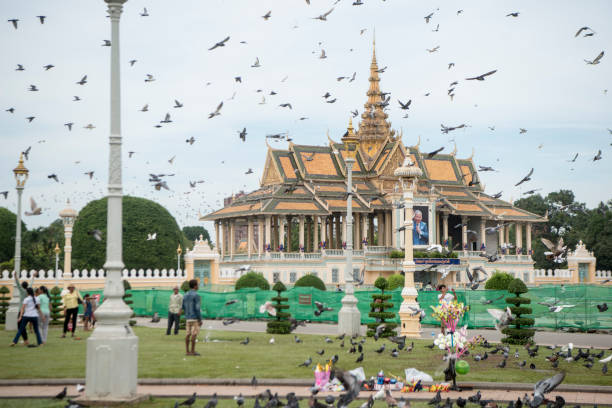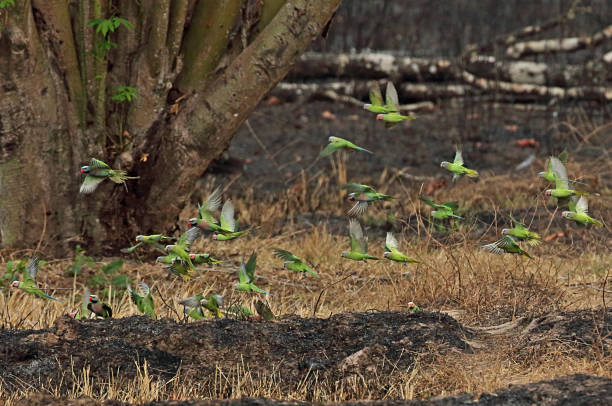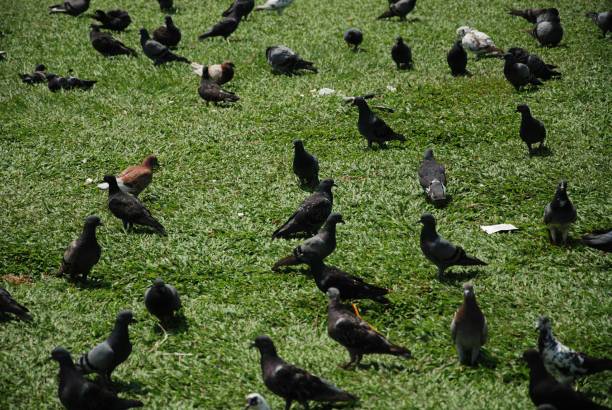Veal Thlan: Paradise for bird-watching enthusiasts in Cambodia
Cambodia is a breeding ground for many types of birds, of which about half are migratory birds, with diverse habitats including flooded forests, the largest intact dry deciduous forest in Indochina, stretching rice fields, large lakes, beaches, mangrove forests, evergreen forests, etc.

Breathtaking scene at the Royal Palace park in front of the Royal Palace at the Sisowath Quay at the Tonle Sap River in the city of Phnom Penh of Cambodia.
About 4 hectares of legally owned land in Veal Thlan village, Sangkat Kong Noy, Khan Dangkor, Phnom Penh was fallow for many years. This place has become a habitat for thousands of birds, such as vultures and crows, and has been reclaimed by local people and authorities in the conservation area.
In recent years, bird populations have increased markedly.
About 10 families in the area have united to protect them from threats such as habitat destruction and poaching. Meth Bunthoeun, a Kong Noy commune official who oversees the village’s bird population, said five or six years ago, the number of birds was only 2,000 to 3,000, but the number has now increased to about 10,000.

Red-breasted Parakeet (Psittacula alexandri fasciata) and Blossom-headed Parakeet (Psittacula roseata juneae) flock flying around recently burnt area in That Boey, Cambodia.
It is estimated that on one tree, there are 50 to 100 birds. No one dares to shoot because nearby villagers help prevent strangers from entering. This bird species creates a unique natural landscape for tourists, so people, especially those who like to hunt animals, should stop and take care together; do not hunt, kill, or trap.

Black pigeons at the park in Phnom Penh Square, Cambodia.
In fact, these species are found in abundance in the area around Tonle Sap Lake and along the Mekong River. But it is good that the number of birds there is increasing, but sometimes there can be some other reasons for the resettlement of the area, which may be due to climate change or the loss of habitat.

